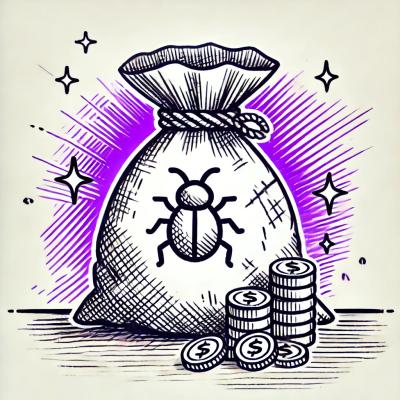
Research
Security News
Malicious npm Packages Use Telegram to Exfiltrate BullX Credentials
Socket uncovers an npm Trojan stealing crypto wallets and BullX credentials via obfuscated code and Telegram exfiltration.
Manage environment variables with 1Password. It is a wrapper around [the wrapper](https://github.com/1Password/op-js) for the [1password-cli](https://developer.1password.com/docs/cli/get-started/) that allows you to store environment variables in 1Passwor
Manage environment variables with 1Password. It is a wrapper around the wrapper for the 1password-cli that allows you to store environment variables in 1Password and load them in a way that is comparable to (and uses) dotenv.
Add the package using your favorite package manager:
$ pnpm add envlocker
You will need to create a .envlockerrc file at the root of your project:
{
"development": {
"item": "Cool app.jpeg", // required
"vault": "envs", // optional
"account": "my.1password.com" // optional
},
"production": {
"item": "jtm2ddhxqwx8orfgfjxknzp5re" // can also be the UUID of the item
}
}
The development and production keys are the names of the environments you
want to use. You can add as many different environments with different names as
you want. The default environment is development, but this can be configured
with the OP_ENV_NAME environment variable.
The vault key is optional but is recommended to reduce the number of
API calls to 1Password. The account key is also optional and defaults to
whichever account op is currently logged into.
The account value can be any of the described by the 1password CLI
documentation. The item and vault
values and the accepted formats are described
here
in the 1password CLI docs.
Once you have created the .envlockerrc file, you can load the environment
variables in a few different ways using envlocker.
Command line:
$ node -r envlocker/config ./index.js
Programmatically with import:
import 'envlocker/config';
or
import { config } from 'envlocker';
config();
Programmatically with require:
require('envlocker').config();
To configure the environment variables within 1password, you will need to create
a new item and add the desired variables as individual fields within the new
item. Fields with empty keys or values will be ignored. Fields are also ignored
if they do not match the pattern ^[A-Z0-9_]+$.
configInjects the environment variables into process.env. The environment name can
also be passed as an argument to this function.
import { config } from 'envlocker';
config({ envName: 'staging' });
This package does not (yet) support 1password Connect Server access.
FAQs
Manage environment variables with 1Password. It is a wrapper around [the wrapper](https://github.com/1Password/op-js) for the [1password-cli](https://developer.1password.com/docs/cli/get-started/) that allows you to store environment variables in 1Passwor
The npm package envlocker receives a total of 464 weekly downloads. As such, envlocker popularity was classified as not popular.
We found that envlocker demonstrated a not healthy version release cadence and project activity because the last version was released a year ago. It has 1 open source maintainer collaborating on the project.
Did you know?

Socket for GitHub automatically highlights issues in each pull request and monitors the health of all your open source dependencies. Discover the contents of your packages and block harmful activity before you install or update your dependencies.

Research
Security News
Socket uncovers an npm Trojan stealing crypto wallets and BullX credentials via obfuscated code and Telegram exfiltration.

Research
Security News
Malicious npm packages posing as developer tools target macOS Cursor IDE users, stealing credentials and modifying files to gain persistent backdoor access.

Security News
AI-generated slop reports are making bug bounty triage harder, wasting maintainer time, and straining trust in vulnerability disclosure programs.